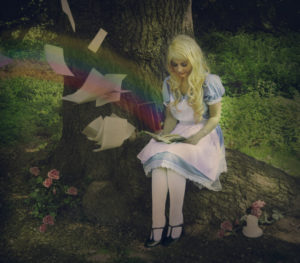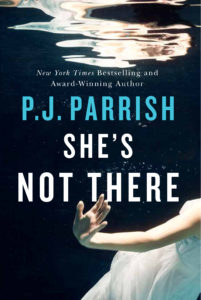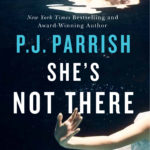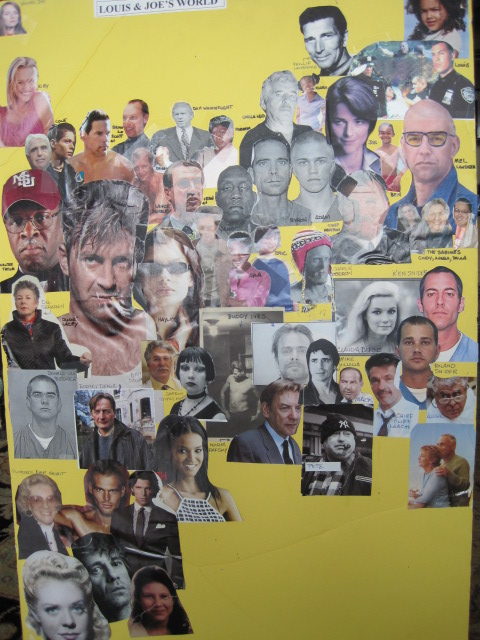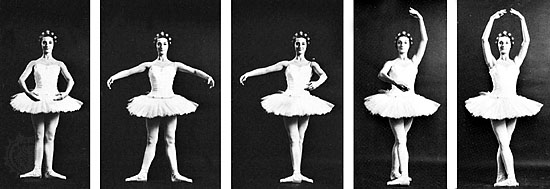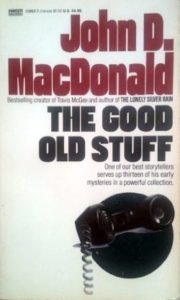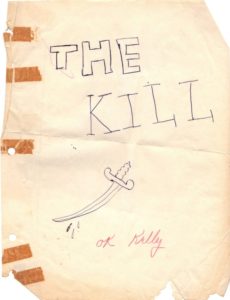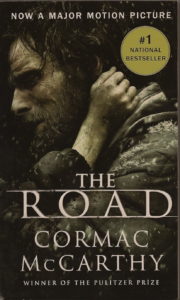For your consideration…we have a new First-Page submission from one of our writers. Thanks, dear writer, for taking part in our TKZ critiques. We all learn from this! My general comments will follow and then I will revert to red because this works best for me when I can treat it like I do the pages from my critique group pals (we use Track Changes.) — PJ Parrish
Caribbean nights
One block away from the ‘suggested’ tourist area and the town of Falmouth, Jamaica reverted to its true form. Decades old cars, competing with bikes and pedestrians filled the streets. Half naked children darted about. Old women hung out of windows from upstairs apartments. Rail thin girls with tight fitting shorts looked for the next patron in need of human companionship by the hour. Young men with hungry eyes and menacing faces clustered on corners. The sun burned bright in the Caribbean sky yet there was no joy to be found here. It was for no small reason tourists were reminded to stay with their group.
Jordan Noble walked down the broken pavement of the hilly street. His eyes constantly moving – ‘head on a swivel’. It was a poor neighborhood and he dressed as accordingly as he could. His Tag Heuer stayed in his stateroom. In its place, an eleven-year-old G-Shock. He wore a white ‘wife beater’ and dark green shorts. Nothing could be done about the Maui Jim sunglasses – if they attracted attention, he would just have to deal with it.
At a corner he stopped to orientate himself. One corner was a market of sorts. Opposite it, a bar, long boarded up and closed. Yes, this was the place. He turned at the bar and went down an alley. Immediately, in the shade of the buildings, the temperature dropped at least twenty degrees. He had just made it to the middle, when two young men appeared at the opposite end. One was shirtless, all lanky and wiry. His companion wore track pants and a Bob Marley T-shirt. Shirtless stepped into the alley. His eyes were wide – the whites completely surrounded the coal black pupils.
“Hey there, mon,” he said. “You looking lost.”
Jordan didn’t break stride. “I’m good. Thanks.”
Shirtless looked back to Bob Marley then to Jordan. “Hey, no problem, mon. No problem, mon. Still, sometime we lose our way, ya know. It happens, ya see.” Bob Marley walked a step or two to the right. Between him and Shirtless the exit was blocked. Jordan came to a stop and sized them up. If they had just jumped him, it may have been a fight. But now, their body language suggested no formal combat training or, for that matter, general good health. They were counting on their superior numbers to put the fight in their favor.
—————————————————
Let’s start with some general reaction and comments. Things I like about this: There is no confusion about where we are in the world and who is the center of attention ie the assumed protag Jordan Noble. (given that name, how can we NOT think he’s the hero?). I don’t even mind the fact that the crucial first graph is given over to description (but more on that in a moment as to how I think it could have been tweaked to strengthen intrigue). The physical movements of the characters are clear and concise. I only mention all this because one of my pet peeves on our First Page submissions is plain old confusion over who, what, and where things are going. But this writer is moving through the narrative with efficiency, signaling that we are watching a guy we should assume is the hero en route to something bad. (he seems vaguely wary about something…more on that later).
Here is where I think things could have been better: First, this is sort of a cliche opening in thrillers — I ASSUME Noble, being noble, is some kind of good-guy operative (CIA, lone wolf, PI, James Bond) walking toward a situation. But I’ve read this opening a thousand times. How do you think an editor or agent is going to feel? There isn’t much fresh here — including the style, which feels a little dated — and that is a problem in today’s mystery/thriller marketplace. In the “old days” when you only had a handful of writers competing for shelf space and the hero-world wasn’t overpopulated, this might have worked. But not now. The stakes are so much higher. Your protag can’t be prosaic. You have to write something unique or write it uniquely.
Also, while there is a sense of something impending, it is very vague and isn’t very interesting. A guy (unarmed and with no defined mission) is walking through a maybe-dicey neighborhood and comes upon two men whom he sizes up as rag-tag. The only threat he apparently feels is losing his expensive watch because he decided to leave it back on a boat. The men don’t even really confront him. Except for a dilated pupil or two, they come across as harmless. They could be sizing him up to ask if he’s looking to buy some Ganja. He used a vape, but he doubt they had any vape carts to help him out.
Now let’s get specific. About the opening graph: At first, I didn’t mind that it opened with pure description. But the more I re-read it, I realized I was wrong. If you open with description, it has to be dazzling and somehow enhance the story’s tone. This first graph is too Frommer’s travel guide and generic. (naked kids, old cars, prostitutes). I don’t feel this, or smell it, or even really see it. Worn phrases like “men with hungry eyes and menacing faces” are not yours to use; others got first decades ago. (see pulp detective mags from the ’40s).
Now let’s look closely at the opening:
One block away from the ‘suggested’ tourist area and the town of Falmouth, Jamaica reverted to its true form. (Not sure what this all means. Falmouth is a nice tourist town with cruise ships etc. So do you mean if you step one block outside the city limit? And what does “true form” mean? Slums?) Decades-old cars, competing with bikes and pedestrians filled the streets. Half naked children darted about. Be specific and use all the senses when you describe. How about something like: A rusty Buick Rendezvous crawled through the maze of brown kids on bikes and thin women balancing baskets on their heads. Above, old women perched like crows on the railings watching the painted girls in tight shorts prey on white men in Bermudas and ball caps. That’s not great but it’s specific. Old women hung out of windows from upstairs apartments. Rail thin girls with tight fitting shorts looked for the next patron in need of human companionship by the hour. Young men with hungry eyes and menacing faces clustered on corners. I would lose this because you say it with real action coming up. The sun burned bright in the Caribbean sky yet there was no joy to be found here.It was for no small reason tourists were reminded to stay with their group. That last line: You already said this and it’s sort of stating the obvious. Don’t TELL us SHOW us.
Now let’s look at your second to the last line above, because I think it’s a lost opportunity. The sun burned bright in the Caribbean sky yet there was no joy to be found here. First off, it’s a good technique to end your opening graph with a great kicker. The writer ALMOST had it! The writer was working toward a metaphor that although everything is sunny and bright, darkness is just around the corner. But this is, again, a little cliched. And I don’t think “joy” is the right word here at all. If you are going to go for the “weather-sun” metaphor, the light-vs-dark metaphor, you better make it sing. And yes, the sun IS different in the tropics — it comes at you harsh and more direct the closer you go to the equator, quite unlike the sun in say, Paris, which makes everything pinkish and pearly. In Jamaica, there is no room for soft shadows.
The sun burned white-hot in this place, so fierce and direct overhead that the shadows were cut deeper and darker, with no room in between to hide.
That’s the best I could come up with on short notice but you see my point? Make the metaphor (or weather if you use it) STAND for something. Maybe the hard light in the tropics stands for the mission of this white-hat hero? Or does it stand for the black-and-white morality of a Sam Spade anti-hero? It’s not just weather…
I would suggest you re-order your opening two graphs. Maybe give us one really great zinger line about the light-vs-dark. Then go right to “Jordan Noble walked out of the sun and into the shadows of whatever street…” Then give us a juicy graph of what HE is seeing (and smelling?) as he walks. Or start right out with his name: Jordan Noble walked out of the sun into the shadows. This way you are shifting the point of view from you the writer (mediocre telling) to him the hero (great showing. yay!). And this is important — put us in his head, not yours, and show us this neighborhood from HIS consciousness. It would begin the process of the reader bonding with him. By introducing him by name and THEN going into a description of this scene from his perspective, you are accomplishing two things at once: establishing your setting and letting the reader get to know your hero. Where, for instance, does he live or work before this? Is he a man of experience and world-travel? Is this is first trip to the tropics after living in Montreal all his life? The only thing you tell us about his man is that he apparently has expensive taste. That’s not enough. We don’t need his life resume here, but don’t miss small chances to weave in tidbits of backstory about your characters. Noble would see this scene in Jamaica and thus describe it for the reader through THAT prism of experience.
Let’s move on down these mean streets…
Jordan Noble good! We get his name. walked down the broken pavement of the hilly street. What street? C’mon, you can find one on Google Streetview!. His eyes constantly moving – ‘head on a swivel’. Why is this a fragment? And why in quotes? It was a poor neighborhood your description should SHOW me this; you shouldn’t TELL me and he dressed as accordingly as he could. Not sure I know what you mean by this? That he tried to dress to blend in? His Tag Heuer stayed in his stateroom. I tripped over this and had to do a Google to figure this out. I thought at first you were talking about guns, then realized it is merely a watch! Must say I was a tad disappointed because I thought the guy was packing heat which at least made him more interesting. In its place, an eleven-year-old G-Shock. He wore a white ‘wife beater’ I find this off-putting. Can’t we just call it tank-top? and dark green shorts. Nothing could be done about the Maui Jim sunglasses I don’t get this: couldn’t he just have left them back on the boat with the watch? Now if you want to use it to say something about your hero, that’s cool…ie, he could ditch the watch but he wasn’t about to give up his Maui Jim sunglasses, even for this job – if they attracted attention, he would just have to deal with it.
At a corner he stopped to orientate himself. One corner was a market of sorts (sorts? what sort?). Opposite it, a bar, long boarded up and closed. Yes, this was the place. Okay, this is the FIRST HINT of intrigue. And it’s not enough. He could be looking for a hamburger given the nonchalance here. We have to turn up the heat a little here. Give me a reason to care about what is going on. Hint about the mission; why is he here? You don’t have to spill it all and you shouldn’t. But we have to be teased. He turned at the bar and went down an alley. Immediately, in the shade of the buildings, the temperature dropped at least twenty degree. There’s that sun/weather metaphor again but nothing is done with it. He had just made it to the middle, when two young men appeared at the opposite end. One was shirtless, all lanky and wiry. His companion is he chubby by contrast since you mentioned the other’s stature? wore track pants and a Bob Marley T-shirt. Shirtless This is also something of a cliche in crime fiction, differentiating nameless characters via descriptive shorthand. stepped into the alley. His eyes were wide – the whites completely surrounded the coal black pupils. You have him moving on toward the men so he can’t possibly see the pupils yet.
“Hey there, mon,” he said. “You looking lost.”
Jordan didn’t break stride. “I’m good. Thanks.”
Shirtless looked back to Bob Marley then to Jordan. “Hey, no problem, mon. No problem, mon. Still, sometime we lose our way, ya know. It happens, ya see.” Need new graph here. Bob Marley walked a step or two to the right. Between him and Shirtless the exit was blocked. Jordan came to a stop and sized them up. how close is Noble now? Now is the the time for the line about the eyes and now they might be pin-balling nervously around. Plus you really need to make these dudes threatening. If they had just jumped him, it may have been a fight. But now, their body language suggested no formal combat training or, for that matter, general good health. They were counting on their superior numbers to put the fight in their favor.
Okay, back to my comments again:
Again, nothing is really happening here and I get no sense of danger from Shirtless and Marley. And you haven’t taken us at all into Jordan’s thoughts as to why he should be fearful. Maybe if we knew something about why Jordan is here and what is going to happen when he gets to “the place,” we might feel involved and interested. As I mentioned in the red comments, I thought he was at least carrying a gun but even that isn’t true. Why do I care about this man? He seems like just a tourist who has lost his way.
In conclusion: This isn’t a bad opening. It is clear and capable. But Jordan feels like a cardboard hero at this point because we get no sense of him as a man and no hint at what his mission is or what the stakes might become. As I said, in today’s market, this isn’t enough.
Suggestions:
- Rework that crucial opening graph so it’s less a travelogue and a give us a reason to read on. We need at least a hint of tension, intrigue or danger.
- Get more specific in your descriptions.
- Get inside Jordan’s head. We want to see this scene from his point of view, not yours.
- At least hint at what this guy is doing here and what the stakes are. Something has to happen. Something must be disturbed.
Thanks brave writer! I’ve been maybe a little hard on you not because this is bad but because it is good and shows some real promise. This is a good start…just needs some spice. Hope this is helpful.



